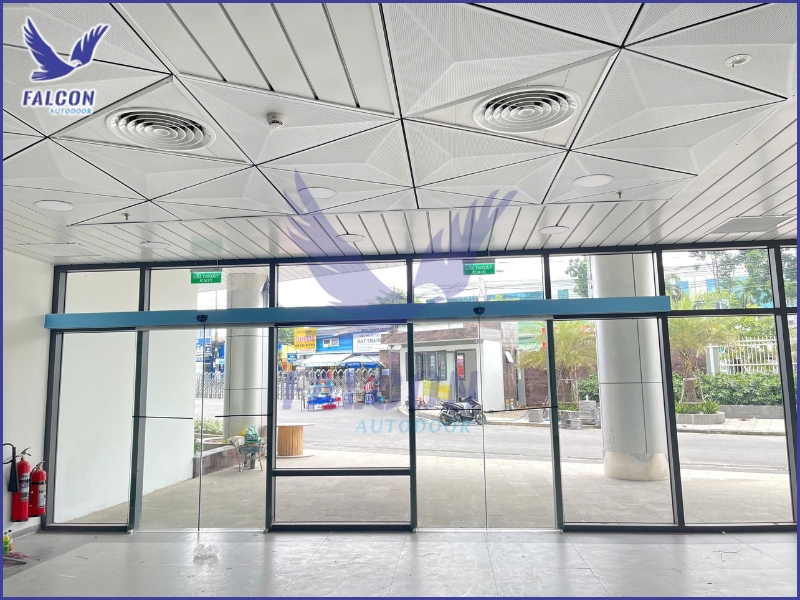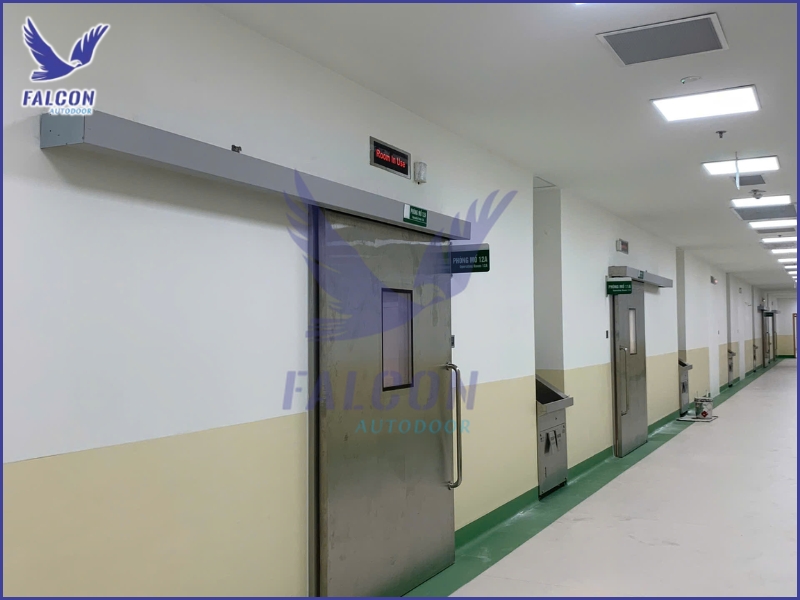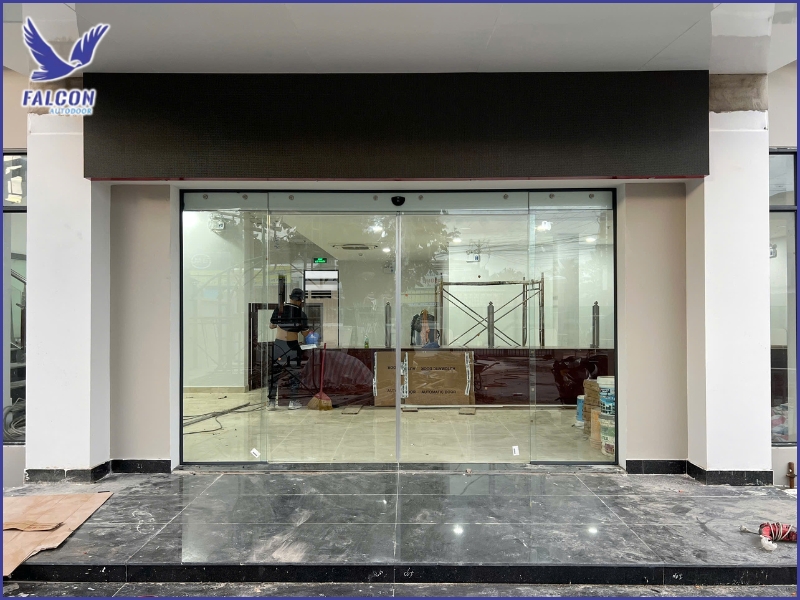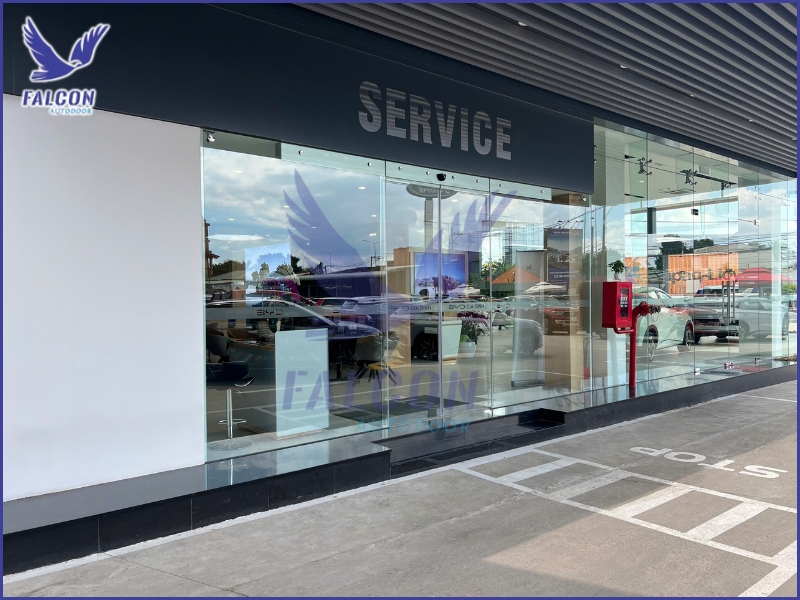5 common automatic door issues and how to fix them
Automatic doors add convenience and a modern feel to any space, but minor faults can occur over long-term use. To help you respond quickly when problems arise, this guide covers the five most common issues with automatic doors and practical, effective steps to resolve them.
1. Door won’t open or close when people approach
When an automatic door fails to react even in high-traffic sites such as supermarkets, offices, or hospitals the cause is usually within the sensor chain or power supply. Rapid triage prevents downtime, keeps users safe, and protects motors from repeated start attempts.
1.1 Likely causes
Sensors may be dusty, blocked, misaligned, or failed, preventing motion detection. Power loss, a tripped breaker, loose cabling, or a defective power adaptor can halt the controller. In some cases, motor or drive faults trigger protection, leaving the system unresponsive until reset.
1.2 Quick actions on site
Verify power to the controller and motor, then gently clean sensor lenses with a soft cloth. If there’s still no response, perform a safe reboot by isolating power for a few minutes before restoring it. Where sensors or drives show errors, schedule replacement by a qualified technician.
1.3 Preventive maintenance notes
Clean sensors and inspect connectors at least monthly, especially in dusty or oily environments. Log any intermittent failures for trend analysis and faster diagnosis. Routine checks keep detection reliable, reduce nuisance faults, and extend system life.

2. Door keeps opening and closing repeatedly
Continuous cycling without pedestrians is common where sensors face drafts, reflections, or moving clutter. Besides being annoying, this cycle inflates wear on rollers and drives and wastes energy. Correcting the root cause restores stability and reduces needless activations.
2.1 Likely causes
Over-sensitive or mis-aimed sensors may “see” moving leaves, signage, or reflections from glass and polished floors. Airflow, swinging decorations, or tree leaves at the threshold can mimic motion. Vibration from nearby equipment can also nudge sensors into false triggers.
2.2 Quick actions on site
Clear the detection zone of small moving objects and adjust the scene where possible. Wipe sensor faces, then reduce sensitivity or narrow the detection field if the controller allows. If cycling persists, have a technician realign the sensor angles or replace faulty units.
2.3 Installation and upkeep tips
In windy or high-glare locations, specify sensors with anti-interference features and adjustable fields. Shield sensors from direct sunlight when feasible. Periodic recalibration ensures accurate triggering as layouts, lighting, or seasonal conditions change.

3. Door makes unusual noise during movement
Squeaks, scraping, or thuds after months of operation signal rising friction or worn components. Left unresolved, noise often precedes track damage, misalignment, or motor overload. Early intervention keeps motion smooth and avoids higher repair costs later.
3.1 Likely causes
Dirty tracks impede rollers, increasing drag and resonance. Lack of scheduled lubrication on carriers and pivots elevates metal-on-metal contact. Worn bearings, flat-spotted rollers, or loose fasteners can shift loads, producing rattle or thump during acceleration and braking.
3.2 Quick actions on site
Isolate power, then vacuum and wipe the track to remove dust and debris. Apply manufacturer-approved, low-dust lubricant to rollers and moving interfaces. If noise remains, inspect and replace worn rollers, bearings, or stabilizers, and torque fasteners to specification.
3.3 Preventive maintenance notes
Clean tracks and re-lubricate every 2–3 months or more often outdoors. Add noise checks to service logs to catch degradation trends early. Proper lubrication and alignment reduce current draw, protect the motor, and lengthen the life of rails and carriers.

4. Door jams or moves slowly
A sluggish or stuck door disrupts flow and can create safety risks if it stops mid-travel. This symptom points to weak drive output, contaminated tracks, or poor balance. Systematic checks restore speed to spec and prevent nuisance stoppages during peak times.
4.1 Likely causes
Undersupply or unstable voltage can starve the drive. Dirt buildup on tracks increases friction, while bent rails or impact damage misguide rollers. Door leaves that have drifted out of balance force the motor to work harder, triggering thermal or torque limits.
4.2 Quick actions on site
Disconnect power and clear the track of obstructions, then wipe runners and guides. Restore power and perform a controller reset to clear faults. If performance is still poor, call a technician to verify supply voltage, straighten rails, re-balance leaves, or replace a weakening motor.
4.3 Usage best practices
Avoid continual rapid-fire cycles that overheat the drive during rushes; enable hold-open logic if available. In dusty or windy areas, increase cleaning frequency. Periodic balance checks keep torque demands reasonable and maintain rated travel speed.

5. Controller panel or remote does not work
If the remote or wall panel fails, the door may not open automatically and may default to manual. In long-running facilities, signal interruptions, board faults, or simple battery issues are common. Restoring control quickly minimizes service disruption and user confusion.
5.1 Likely causes
Remote batteries may be depleted, or IR/RF signals can be blocked or interfered with by other devices. Loose connectors at the controller or a damaged receiver module can sever commands. Faults on the control board may lock out inputs until cleared.
5.2 Quick actions on site
Replace remote batteries and confirm the indicator LED works. Perform a safe controller reset per the manufacturer’s instructions to clear latched faults. If inputs remain dead, arrange professional diagnosis to repair the receiver path or swap defective boards with genuine parts.
5.3 Handling and care tips
Keep remotes away from heat, moisture, and impacts that can damage circuitry. Store control devices in labeled locations to prevent mix-ups on multi-door sites. Periodic function tests ensure the correct remote operates the intended entrance every time.

Understanding these common faults helps users handle minor issues promptly and extend door lifespan. For problems involving motors, sensors, rails, or control boards, DIY repair can be risky without proper expertise. When your automatic door misbehaves, contact Thuy Linh Long we specialize in maintenance, repair, and genuine Falcon parts. Our experienced technicians provide on-site inspections, fast fixes, and reliable commissioning so your entrance runs smoothly like new.
THUY LINH LONG SERVICES TRADING COMPANY LIMITED
DISTRIBUTOR
Address: 243D Vuon Lai Street, Phu Tho Hoa Ward, Tan Phu District,
Ho Chi Minh City, Vietnam.
Tel: +84 28 22497999
E-mail: cuatudong24h@gmail.com
SUPPLIER
KUM YANG MATERIALS CO.,LTD
Address: 124-60, Myeongdong-ro, Hallim-myeon,
Gimhae-si, Gyeongsangnam-do, 50851, Korea.
Tel: 82-55-345-8380










